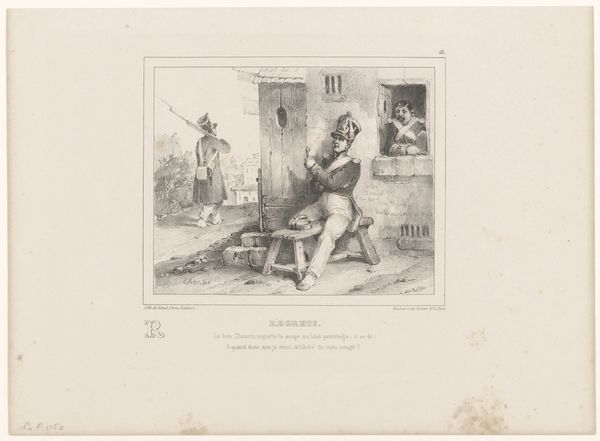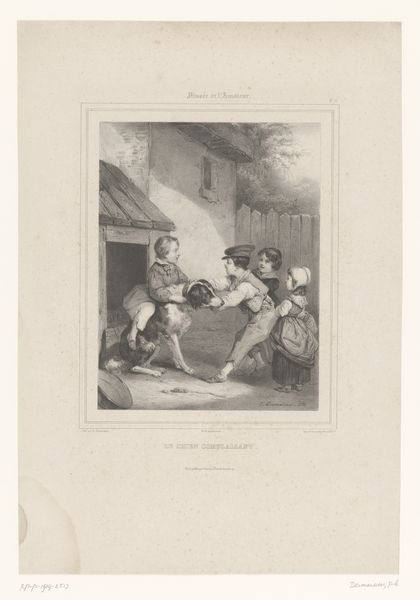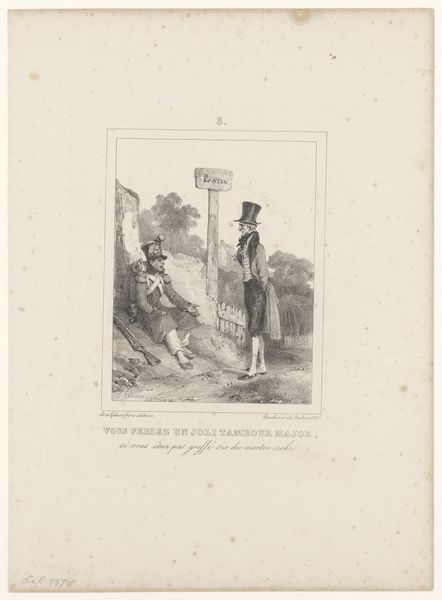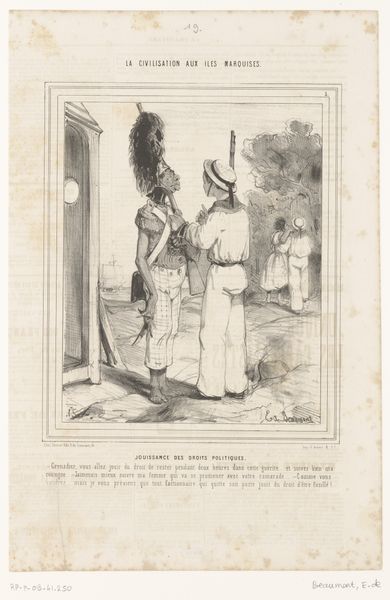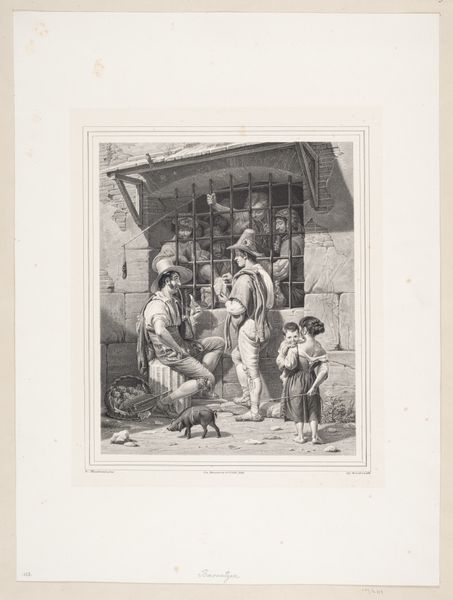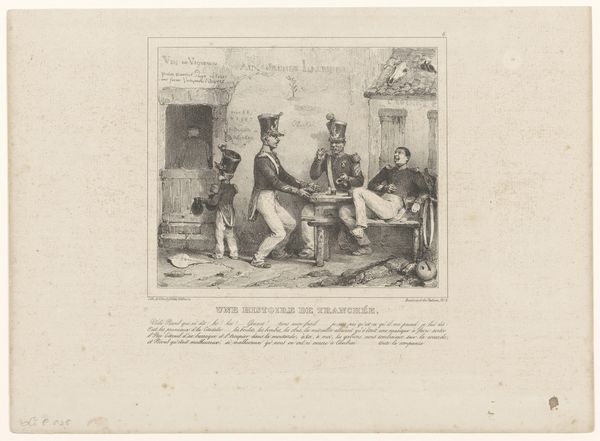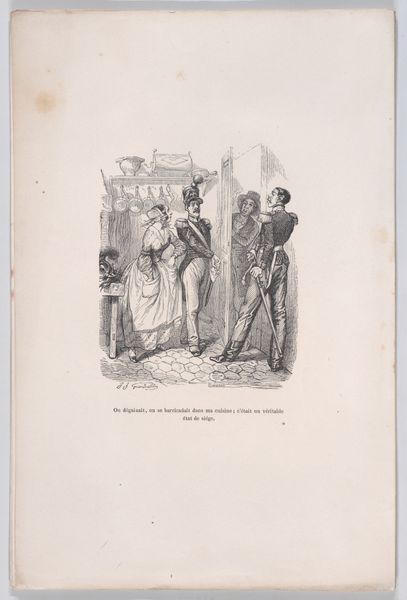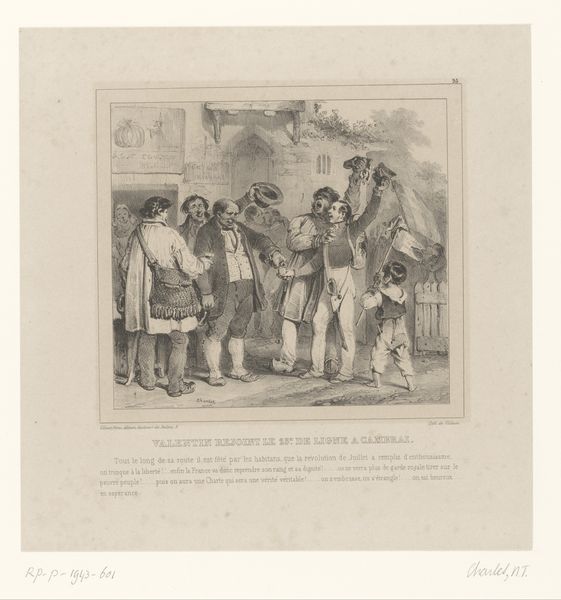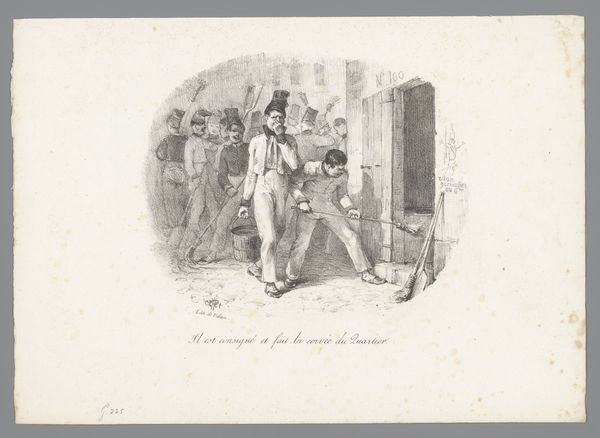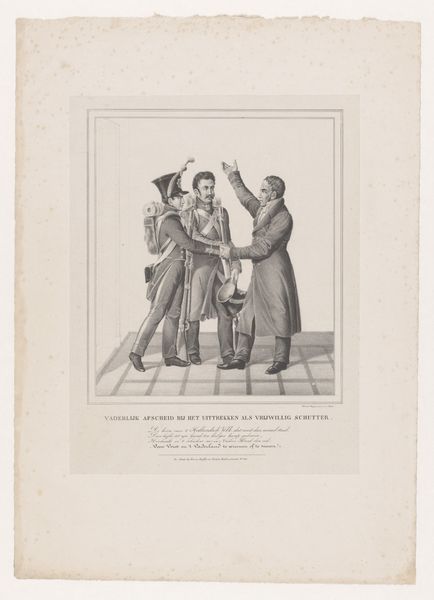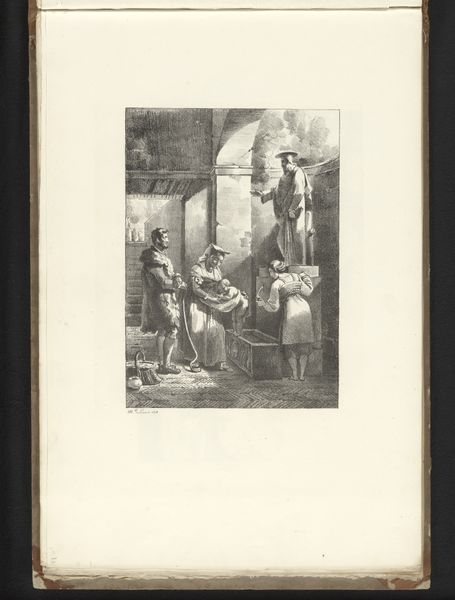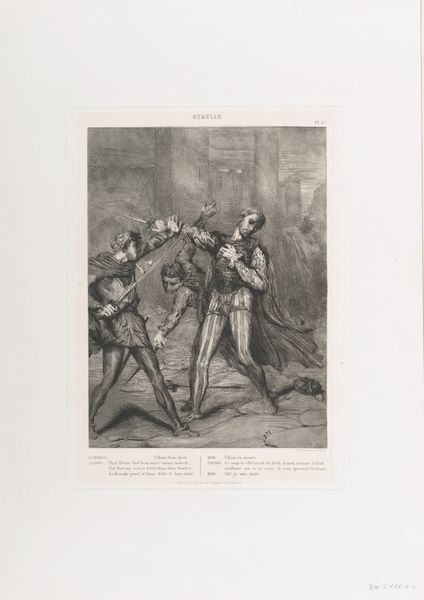
drawing, lithograph, print
#
portrait
#
pencil drawn
#
drawing
#
narrative-art
#
lithograph
# print
#
caricature
#
pencil sketch
#
pencil drawing
#
genre-painting
#
realism
Dimensions: height 540 mm, width 350 mm
Copyright: Rijks Museum: Open Domain
Curator: Ah, yes, this lithograph by Nicolas Toussaint Charlet, dating from 1840. It's titled "Sergeant en schoenlapper met vogelkooi," or "Sergeant and Cobbler with Birdcage," and it's currently housed here at the Rijksmuseum. Quite a charming little scene, wouldn’t you say? Editor: Indeed! Immediately, the contrast strikes me. The sergeant, so upright and formal, against the cobbler, perched precariously, fiddling with that birdcage. There’s a wonderful tension created through the figures alone. Curator: Well, beyond the superficial visual appeal, it's vital to recognize the sociopolitical commentary at play. Charlet frequently depicted scenes from everyday life, often focusing on the lives of ordinary people. Look closely: This juxtaposition serves to highlight the stark class divisions prevalent in 19th-century French society. Editor: I concede the potential social narrative, but my attention is drawn to the use of line. See how the lithographic technique captures the nuances of light and shadow, delineating form while retaining an expressive, almost gestural quality. The very materiality of the print—the paper, the ink—contributes to the artwork’s overall texture and impact. Curator: The mass production afforded by lithography undoubtedly played a part in democratizing art, bringing images like this, and perhaps the implicit social criticisms within, to a wider audience beyond the elite salons. Notice also the cobblestone setting itself; this could well be one of the backstreets, or semi-rural communities where these social divisions were perhaps more palpable. The material conditions of production shaped its dissemination. Editor: Perhaps. Yet, consider how the carefully constructed composition guides the viewer's eye. The way the diagonal of the cobbler's stance mirrors the slant of the shed roof. Note the recurring geometric motif—rectangles forming doorways, windows, the birdcage itself—establishing a structured rhythm within the scene. Even the placement of the figures is a balance, a silent equilibrium on the picture plane. Curator: Balance… perhaps. I read something more challenging than mere 'equilibrium'. Observe the inscription at the bottom. It’s the key here, and underscores a sentiment about what one earns honestly compared to something ill-gotten, driving home Charlet's social critique in readily consumable form. He's not merely capturing appearances. Editor: An interesting interpretation. Looking closer at the printed inscription does indeed add another layer. Still, I’m impressed with the ways in which formal arrangements operate irrespective of the intended subject matter. The aesthetic relationships at play give it… weight. Curator: I see your point. Ultimately, it’s how Charlet, through both his representational choices and printing method, engages with the world around him that makes this more than just ink on paper. Editor: Indeed. The artwork offers layers of engagement through its intricate patterns as well. A piece that benefits from, even demands, a closer look.
Comments
No comments
Be the first to comment and join the conversation on the ultimate creative platform.
